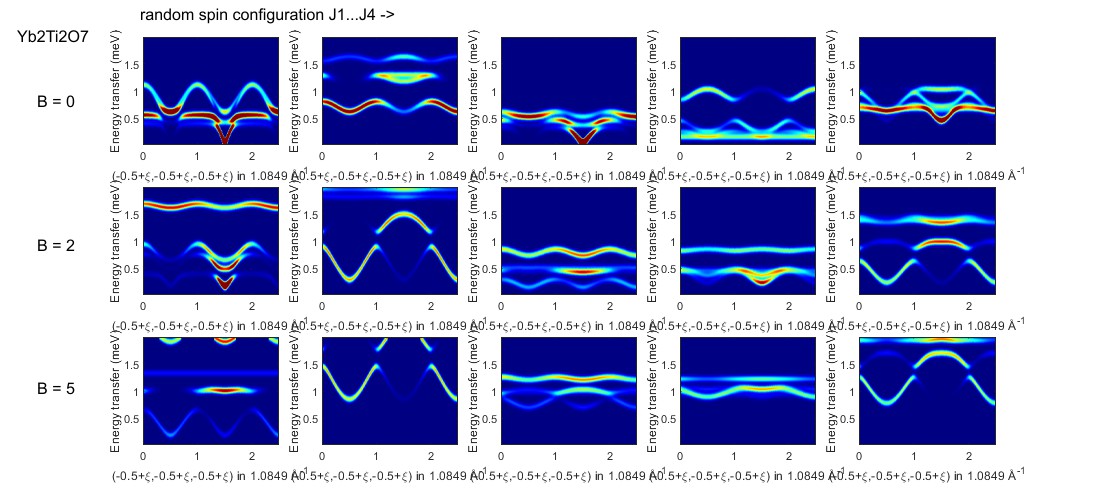Institute Quantum Phenomena in Novel Materials
Scientific Use Case
Scientific Questions
We investigate novel magnetism that is typically exhibited in quantum spin systems and strongly correlated systems. While we identify, synthesize and characterize potential magnetic materials, our ultimate goal is to extract magnetic Hamiltonian through inelastic neutron scattering.
A magnetic Hamiltonian is a collection of features known as magnetic exchange interactions (denoted by J’s) that can describe all magnetic properties of a system. An essential part of obtaining the exact magnetic Hamiltonian involves fitting the experimental inelastic neutron scattering (INS) data to theoretical simulations that are based on pre-assumed Hamiltonians. This approach works very well when the assumed Hamiltonian is approximately close to the actual one. However, in some magnets where quantum effects are dominant, any small perturbation to the Hamiltonian can radically affect the inelastic excitation spectra making the traditional fitting approach highly time-consuming. Therefore, we would like to make use of machine-learning models that can find the best matching Hamiltonian for a given experimental dataset.
Another prospective use of machine-learning algorithms relates to the quality of the experimental INS data. Generally, the INS data suffers from many systematic/non-systematic, reproducible/irreproducible artifacts and noise that are introduced by the measurement environment and/or additional sample dependent characteristics. Currently, most of these artifacts are removed manually which is often time-consuming and imprecise. Therefore, a clever algorithm is needed to process the experimental data to automatically remove artifacts and other noise which varies for every measurement.
Ideally, we would like to combine the two aspects so that magnetic J’s are obtained for a clean experimental dataset.
Data
Determination of magnetic Hamiltonian of a system requires the measurement of complete excitation spectra. This is typically measured as a structure factor S(Q,ω) in inelastic neutron scattering experiments where Q (Qx, Qy, Qz) is the momentum transfer and ω is the energy transfer. We perform these measurements at so called large-scale neutron facilities such as ILL (Grenoble, France) and ISIS (Didcot, United Kingdom) and the large 4-dimensional S(Q,ω) dataset can be as big as 250 GB for a single system.
To identify the magnetic Hamiltonian, we’ll work on the experimentally measured and theoretically simulated S(Q,ω) of a quantum spin chain system. Although the ultimate goal is to train the whole S(Q,ω), as a first step, we will use only a subset of reduced datasets S(Q’,ω’) (as shown in Figure below for Yb2Ti2O7). The training data will include several hundreds of simulated S(Q’,ω’) each calculated for different combination of magnetic exchange parameters. All the data will be cleaned on a high-level and will be provided in a HDF5 (or Tiff-16bit) format.
Hardware
-
Linux-Server with 2x Intel 64 Family 6 Model 45 Stepping 7 GenuineIntel 2900 MHz (Intel(R) Xeon(R) CPU E5-2690 0 @ 2.90GHz) 8(16) Cores; 128 GB; 2xTesla M2075
-
Windows-Server with 2x Intel 64 Family 6 Model 63 Stepping 2 GenuineIntel 2500 MHz (Intel(R) Xeon(R) CPU E5-2680 v3 @ 2.50GHz) 12(24) Cores; 128 GB; Tesla K40m (12GB)
More information
This work is available as a summer project. Please feel free to contact us for further information

